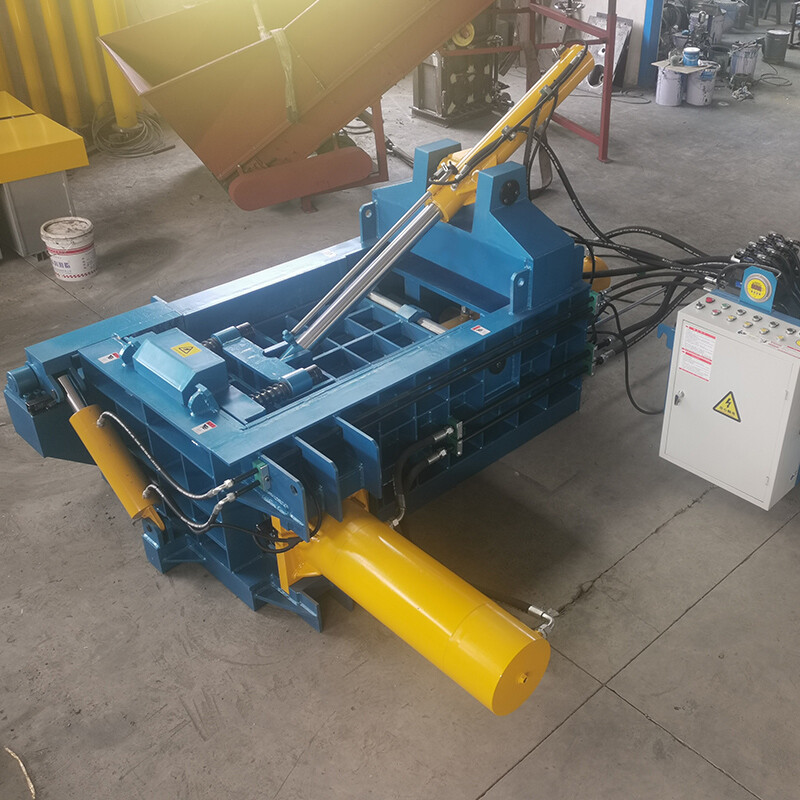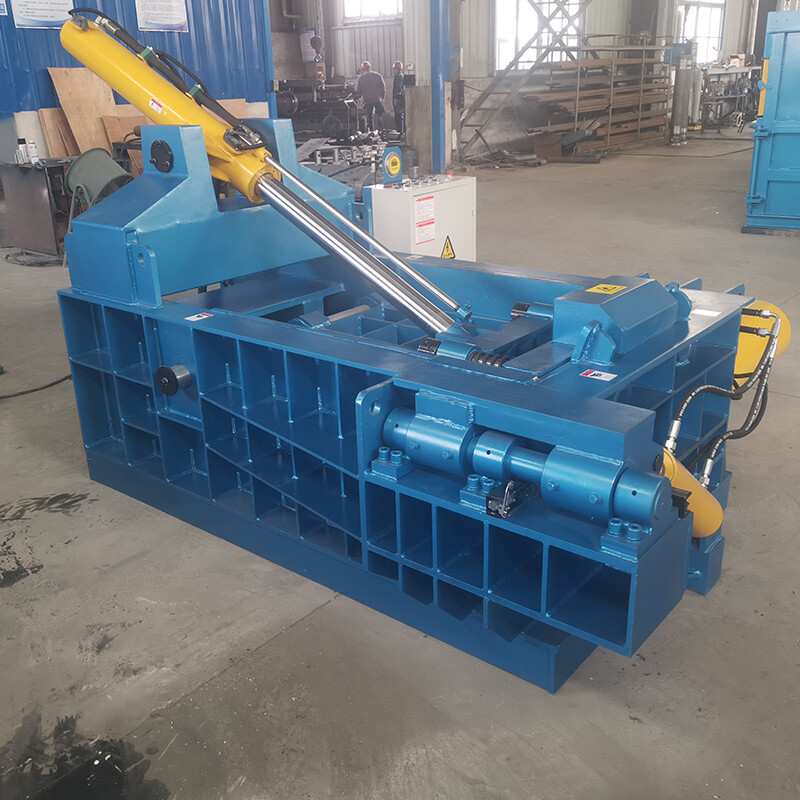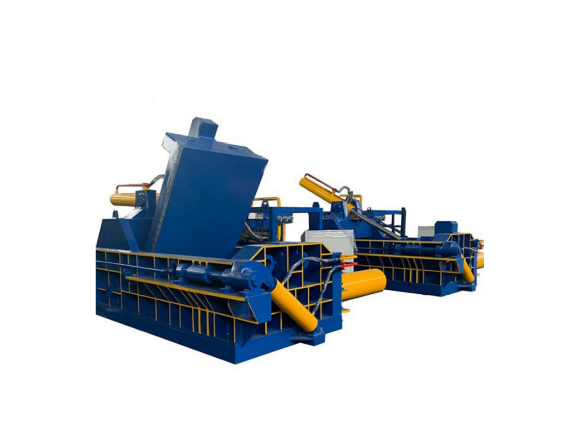What Is a Horizontal Metal Baler?

A horizontal metal baler is a heavy-duty industrial machine specifically engineered to compress large volumes of scrap metal into uniformly shaped bales. Unlike its vertical counterpart, which operates with an up-and-down compression mechanism, the horizontal baler utilizes a powerful hydraulic ram that moves horizontally to crush and compact metal against a fixed plate. This unique design makes it particularly effective for processing oversized or irregularly shaped metal waste that would be difficult or impossible to handle with other types of balers.
The machine typically consists of several key components: a large loading chamber where s
crap is fed in, a hydraulic compression system that generates immense pressure (often measured in hundreds or even thousands of tons), and a bale tying mechanism that secures the compressed material. Many modern horizontal balers also incorporate advanced features like programmable logic controller (PLC) systems for automated operation, safety interlocks to protect operators, and customizable compression settings to handle different types of metal scrap.
In today’s fast-paced recycling industry, efficiency and cost-effectiveness are paramount. Among the various equipment designed to streamline metal recycling processes, the horizontal metal baler stands out as an indispensable workhorse. This robust machine revolutionizes how scrap yards, rec
ycling centers, and manufacturing facilities handle metal waste by transforming bulky, unmanageable scrap into compact, dense bales that are easier to store, transport, and process.
When compared to vertical balers or manual processing methods, horizontal metal balers offer several distinct advantages that make them the preferred choice for serious metal recycling operations. First and foremost is their unmatched processing capacity. The horizontal orientation allows for significantly larger loading chambers, meaning they can handle bigger pieces of scrap and process more material in a single cycle. This translates to higher throughput and greater overall productivity.
Another major benefit is superior bale density. The horizontal compression mechanism, combined with the machine’s high hydraulic pressure ratings, produces exceptionally dense bales that maximize the amount of material that can be transported in a single load. This density not only reduces shipping costs but also increases the value of the scrap, as recycling mills typically pay premium prices for well-compacted material that’s easier to handle and process.
Safety is yet another area where horizontal balers excel. By automating what would otherwise be a labor-intensive and potentially hazardous process, these machines significantly reduce the risk of workplace injuries associated with manual scrap handling. Many models come equipped with advanced safety features like light curtains, emergency stop systems, and interlocked doors that prevent operation when the chamber is accessible.
Why Use a Horizontal Metal Baler?

A horizontal metal baler is an essential machine for any scrap metal recycling operation, offering unmatched efficiency, cost savings, and safety benefits. Unlike vertical balers, which compress materials vertically, horizontal balers use a powerful hydraulic ram that moves sideways, allowing them to process larger and bulkier scrap—such as cars, appliances, and demolition debris—with greater force and consistency. The key advantages of using a horizontal metal baler include higher productivity, as it can handle larger volumes of scrap in less time; space and transportation savings, since compacted bales take up less storage and reduce shipping costs; increased scrap value, as tightly packed bales are preferred by recycling mills; and enhanced workplace safety, minimizing manual handling of sharp or heavy metal pieces. Additionally, horizontal balers are versatile, capable of processing various metals—from steel and aluminum to copper—making them ideal for scrapyards, manufacturing plants, and demolition sites. By automating the compaction process, these balers reduce labor dependency while maximizing output, ensuring businesses remain competitive in the fast-paced recycling industry. Whether you’re looking to optimize workflow, cut operational costs, or improve scrap resale value, investing in a horizontal metal baler delivers long-term efficiency and profitability.
For businesses serious about scrap metal recycling, a horizontal metal baler is a game-changing investment. It enhances productivity, cuts costs, and boosts profitability by transforming loose scrap into high-value, transport-ready bales. Whether you’re a small scrap dealer or a large recycling plant, integrating this powerful machine into your workflow ensures long-term efficiency and competitive advantage in the metal recycling market. Upgrade to a horizontal baler today and revolutionize your scrap processing!
How to Use a Horizontal Metal Baler?

Horizontal metal balers are powerful machines that transform loose scrap metal into compact, manageable bales. To operate one effectively, follow these key steps: First, prepare your scrap by removing non-metallic materials and sorting metals by type when possible. Next, load the material evenly into the baler’s chamber, being careful not to exceed capacity limits. Activate the hydraulic compression system to compact the metal with tremendous force (typically hundreds to thousands of tons). Once fully compressed, secure the bale with heavy-duty wires or straps before ejecting it from the machine. Modern balers often feature automated controls and safety systems that simplify operation while protecting workers.
step 1. Pre-Operation Preparation
Before starting, conduct a thorough inspection of the baler:
– Check hydraulic fluid levels and look for leaks
– Ensure all safety guards are in place
– Verify the emergency stop system functions properly
– Clear the work area of debris and obstructions
step 2. Loading the Scrap Metal
– Sort materials by type (ferrous/non-ferrous) when possible for better recycling value
– Remove contaminants like plastic, rubb
er, or hazardous materials
– Feed material evenly into the chamber, avoiding overloading
– For large pieces, position them strategically for optimal compression
step 3. Compression Process
– Engage the hydraulic system according to manufacturer guidelines
– Monitor pressure gauges to ensure proper compression
– Allow the ram to complete its full compression cycle
– For mixed materials, consider multiple compression cycles
step4. Bale Tying and Ejection
– Automatically or manually tie the bale with steel wires or straps
– Ensure ties are secure to maintain bale integrity
– Activate the ejection mechanism to remove the finished bale
– Store bales on level, stable surfaces
By following these guidelines, operators can maximize the efficiency and safety of their horizontal metal baler while extending its service life. Proper operation not only improves productivity but also enhances the value of recycled materials and reduces workplace hazards.
